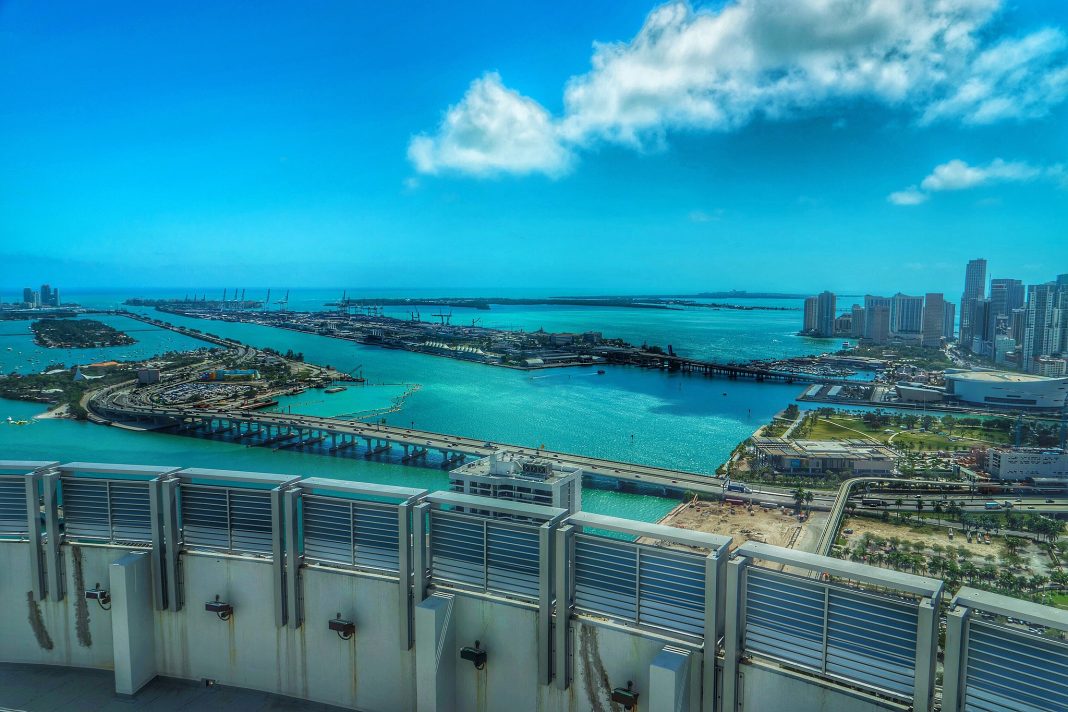Fish kills typically occur due to a combination of factors. Pollution, such as fertilizer runoff and sewage leaks, contributes to algal blooms and also kills off enormous amounts of seagrass. Without the seagrass, which oxygenates the water, the fish in the Bay suffocate to death. While researchers are still attempting to determine the exact cause of this fish kill, it is likely that the lack of seagrass has starved the Bay of oxygen.
Theresa Pinto, a UM lecturer with a specialty in ecosystem science and policy, worries that the fish kill suggests the Bay is approaching a point of no return.
“It is indicative of the fact that Biscayne Bay has kind of hit a tipping point,” Pinto said. “It’s just kind of accelerating the degradation. A lot of people think Biscayne Bay is dying, in a sense. And if it does, you can just imagine more and more fish kills.”
Biscayne Bay provides Miami with a wealth of valuable ecosystem services, and is a vital part of the city in both the natural and economic spheres.
“There’s a lot of recreation that goes on in Biscayne Bay, a lot of tourism,” said Pinto. “If all that would go away, it really would have a huge impact on Miami. It would impact our economy, the environment and everything.”
According to Pinto, this particular fish kill is bizarre because it occurred during the “off season.” Usually, fish kills are most prevalent during the summer, when high temperatures exacerbate already precarious conditions. Apparently, this is a sign that the Bay is deteriorating at a breakneck pace.
For Anna Frey, a junior marine affairs and ecosystem science and policy major, the fish kill proves that the Bay is endangered by the mounting pressures of climate change.
“The fish kill, I’d say, is more a symptom of a larger issue,” Frey said. “Really, the entire ecological system is very interconnected. So, if you see one effect, there’s probably more that aren’t necessarily being detected yet.”
Without focusing on solving the larger issues at play, fish kills will continue to occur, and as they become more severe, so will the effects upon the larger ecosystem. For example, organisms at higher trophic levels that depend upon the fish as a food source will also begin to struggle, and consequences will only snowball outwards from there.
“If we don’t maintain our shorelines and our local ecosystems, we’re obviously at huge risk for flooding from sea level rise,” Frey said. “That’s something that might be able to be mitigated by downstream impacts. But unless we’re also focusing on upstream impacts by battling climate change and larger climate related issues like air pollution, water pollution and minimizing carbon emissions and our greenhouse gas emissions, all of these smaller impacts we see at the local scale are going to continue.”
Miami-Dade County officials are working to mitigate the ramifications of pollution in Biscayne Bay, and hopefully limit the amount of future fish kills. Just last year, according to Pinto, the county appointed its first ever Chief Bay Officer, Irela Bagué, who is responsible for coordinating the Bay’s restoration.
“There will be a lag before we see any impact from the money and the time that’s going towards restoring the Bay, but it’s not all doom and gloom,” Pinto said. “I think you could say if we had started thinking about the Bay this way 20 years ago, we actually wouldn’t be in these conditions.”






